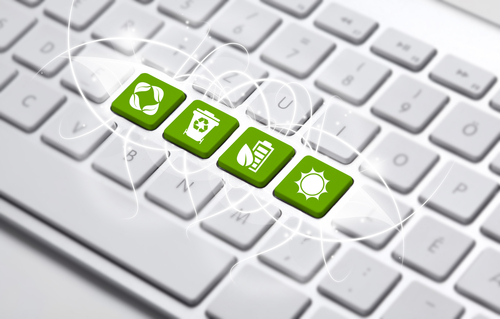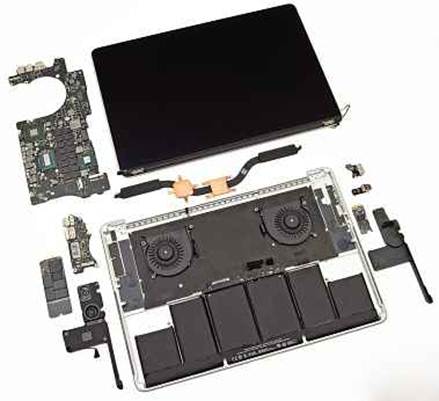A US environment agency has backed
the green credentials of ultrathin laptops. Is it merely greenwashing?
When Apple pulled out of the US
environmental scheme EPEAT, ahead of the launch of the MacBook Pro with Retina
display, the move appeared to be definitive confirmation that ultrathin laptops
can’t be environmentally friendly.
Five months on, and EPEAT has given a range
of ultrathin laptops, including the MacBook Pro with Retina displays, the
thumbs up, provoking widespread scorn from fellow environmental groups and
industry experts.
The question remains: can ultraportables
really be green?

the
MacBook Pro with Retina displays, can ultraportables really be green?
EPEAT vs Apple
In July Apple withdrew from EPEAT, leaving
many including laptop teardown expert iFixit wondering if this was due to its
MacBook Pro with Retina display. Public pressure saw Apple rejoin the scheme
soon after, which would verify whether the model met EPEAT’s recycling
standards.
The results of the tests which EPEAT
widened to all “ultrathin” unibody laptops in its registry were announced in
October and locked at four areas: whether tools were readily available; and
whether both battery and screen could be dismantled quickly and safely.
Every laptop passed EPEAT’s verification,
and the surprising definitions of “readily available” and “upgradeable” led to
accusations from Greenpeace that the group had “caved” to manufacturer
pressure. Calling it a “clear case of greenwashing”, iFixit founder Kyle Wiens
claimed in a blog post that Apple’s MacBook Pro with Retina display was “the
least repairable, least recyclable computer I’ve encountered in more than a
decade of disassembling electronics”.
Two points of contention were decided by
EPEAT’s independent panel. It declared that a tool could be considered easy to
obtain if it was available to buy online, without going directly to the
manufacturer. That means Apple’s proprietary screws don’t fall foul of EPEAT’s
standard, as third-party firms have developed their own screwdrivers for them.

Apple has announced that it is
reversing course and has put all of its eligible devices back
on the EPEAT list
Second, EPEAT’s panel decided that any
device that has a high-speed bus of any sort can be upgrade if you need more
storage, plug in an external drive. Wiens said that “incredibly loose criteria”
includes every laptop on the market. Even EPEAT’s CEO Robert Frisbee admitted
that the decision was a surprise, and said it showed the standard needs
updating. “Just as an example, the standard refers to upgrading floppy disks:
that’s just a sign it’s a little dated which it is,” he told PC Pro.
EPEAT also timed how long it took to
dismantle five laptops including one from Apple declaring all took fewer than
20 minutes, with batteries requiring between 30 seconds and two minutes to
remove. However, iFixit disagreed, saying it took an hours to safely remove the
battery from the Apple MacBook Pro noting it wasn’t handed manufacturer
instructions as EPEAT was, and that such data isn’t usually distributed freely.
Whatever the rights of wrongs, the dispute
appears to have done little harm to Apple’s sales. Frisbee noted that many
consumers feel guilty for prioritising “cool” electronics over green ones, but
admits there’s nothing available on the market that perfectly combines the two.
“That’s the conflict: if you’re going to make something easily replaceable,
no-one yet has been able to design an ultra-sleek unit,” he said.
Sticky problem
However, iFixit suggests it is possible.
The company performs teardowns – methodically taking apart devices to see what
they’re made of and how to repair them. Wiens told us the few Ultrabooks his
firm had dismantled have been “decent”. While the MacBook Pro with Retina
display scored a lowly one out of ten in its repairability ranking, the version
without the high-end display scored seven; Asus’ Zenbook scored eight.
The problem isn’t the thinness of the
devices, or innovative from factors; it is glue. “It’s easier to make products
if you glue them together, but harder to repair them,” Wiens said.
“Design for disassembly/repair is something
that you have to factor in at the beginning of the design process. If it isn’t
part of management’s priorities, it isn’t going to happen,” he added. “Apple
has the best designers in the world, and they have made some tremendously
repairable products in the past. The current Mac Mini is a great design. They
just have to decide what they care.
Caring about repairs
However, the eager adoption of “black box”
devices such as tablets suggests that most consumers aren’t too keen to open up
gadgets and poke around. “I suspect the general consumer no longer has an
interest to get into the guts of their machine,” Frisbee said. “If a TV goes
wrong, nobody has the instinct to pull out a screwdriver.” Plus, he noted that
there’s “some conflict with the commercial side” tech companies are happy
selling us new products rather than replacement parts
That’s one point with which Wiens agrees.
“New software degrades old hardware, and simple upgrades such as RAM have
really helped people in the past,” he said. “Now, the primary upgrade we need
in mobile devices is storage. But the manufacturers are making so much money
marking it up that they refuse to add microSD slots.”
Regardless of whether consumers want to
pick up screwdrivers or manufacturers want to shift more new products, shorter
replacement cycles have a negative effect on the environment. According to
Francesca Broadbent, a spokesperson for recycling charity Computer Aid, reusing
IT equipment is 25 times more energy-efficient than recycling. “To put this in
a different way, over 4,000 times more material is used to make a laptop than
it actually ends up weighing,” she told PC Pro.
Higher standards
The upcoming refresh of the IEEE 1680.1
standard is key to placing more pressure on manufacturers to change their ways.
However, Wiens said the last time changes to the standard were voted on,
manufacturers “completely outgunned” other interest groups, holding 61% of
votes while iFixit was the only consumer advocacy group at the table.
“We need to show the manufacturers that
it’s in their interests to design long-lasting products,” Wiens said. “Most
tool companies know this – you wouldn’t buy a power drill that failed after 12
months. We need to hold electronics companies to the same standard.
Upgradeability and repairability don’t come at the cost of progress. Great
design should be long-lasting.”
Taking apart a MacBook Pro with Retina

Some
parts can be lifted out easily, but others are glued in, making them difficult
to replace

The
MacBook Pro with Retina display can be taken apart, but specialist tools are
required
iFixit didn’t pull any punches when it took
apart the MacBook Pro with Retina display, giving it a score of one of ten for
repairability a damning judgement, given that devices such as the iPhone 5,
Kindle Fire HD and Nexus 7 all scored a much healthier seven out of ten. The
repair site criticised Apple’s proprietary pentalobe screws, which require
specialised tools to access the laptop’s interior. Inside, the RAM is soldered
to the logic board, and the SSD is proprientary, so neither can be upgraded.
Plus, the battery is glued in and the display fused, making them difficult to
replace, according to iFixit.